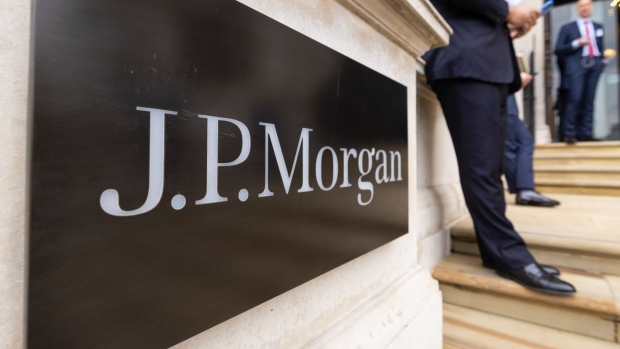Jan 13, 2023
US Banks See Customers Demanding Higher Yields on Deposits
, Bloomberg News

(Bloomberg) -- The country’s two largest banks just put rivals on notice: they’re finally prepared to pay out more to savers demanding higher yields on their deposits.
After a year of relentless rate hikes by the Federal Reserve, JPMorgan Chase & Co. and Bank of America Corp. took turns on Friday warning that they’re considering boosting the amount they pay out on the trillions of deposits they have sitting on their balance sheets. The moves are poised to weigh on net interest income, the revenue banks collect from loan payments minus what they pay depositors.
“We’ve never had rates go up this fast,” JPMorgan Chief Executive Officer Jamie Dimon said on a conference call with analysts discussing fourth-quarter earnings. “I expect there will be more migration to CD, more migration to money-market funds,” he said, referring to products paying out higher yields, including certificates of deposit.
JPMorgan also will have to change the interest it pays on savings accounts, Dimon said. The New York-based bank forecast 2023 net interest income of $73 billion, less than analysts had estimated, partly driven by the interest repricing and modest deposit attrition.
The big banks are late to the party with their pledges, lagging behind higher-yield options readily available to consumers elsewhere. First Internet Bank of Indiana is offering an annual percentage yield of 4.39% for a six-month rate, while Synchrony Financial is paying 3.9% for the same term, according to Bankrate LLC. Even US savings bonds pay more, with Series I offerings earning a composite rate of almost 6.9% — and they’re at least partially indexed to inflation and come with a tax advantage.
BofA also expects to pay higher rates, Chief Financial Officer Alastair Borthwick said. The second-largest US bank also said its net interest income will be lower than analysts had expected this year, with Borthwick pointing to global banking and the upper end of wealth management as areas where customers are shifting their deposits into “high-yield alternatives.”
Both banks have, so far, been able to keep a lid on deposit costs. Both banks pay depositors just 0.01% for their savings on standard accounts, their websites show.
Average deposits fell 4% in the fourth quarter from a year earlier at JPMorgan, and 5% at BofA.
©2023 Bloomberg L.P.





